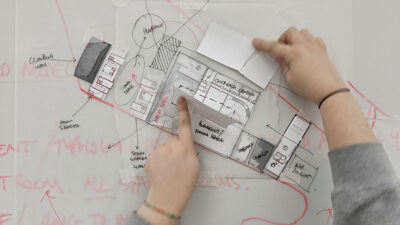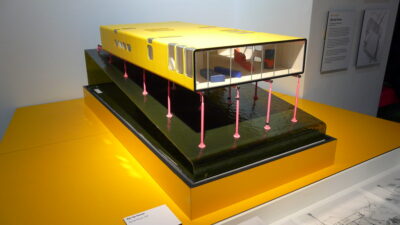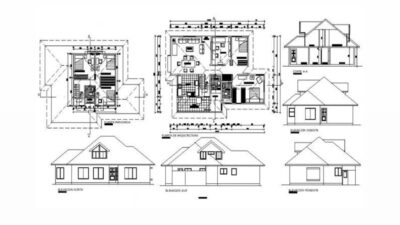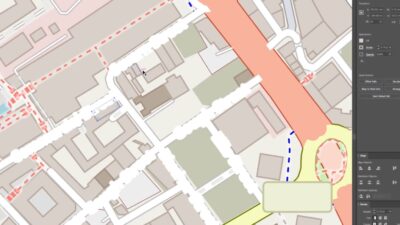When it comes to pursuing a career in architecture in Connecticut, understanding the necessary steps to acquire a license is paramount. Connecticut, like many states, has specific requirements and procedures for individuals seeking licensure. Whether you’re a recent graduate or a seasoned professional looking to practice architecture in the Nutmeg State, this comprehensive guide will illuminate the path to obtaining your license.
What Is an Architecture License?

More than just a piece of paper, an architectural license is a testament to your expertise, competence, and commitment to industry standards. Connecticut requires the license to practice architecture as an independent professional, ensuring public safety and welfare:
- An architecture license is a professional credential granted to individuals who have met specific educational, experiential, and examination requirements set forth by a governing board or regulatory body in a particular region or country. This license legally authorizes an individual to practice architecture independently, offering architectural services to clients, and stamping architectural drawings for approval by local authorities;
- Acquiring an architectural license means that an individual has demonstrated competence, skill, and ethical responsibility. It serves as evidence of competence in this professional field.
Typically, the process of obtaining an architectural license involves obtaining professional education from an accredited program, gaining practical experience working under the supervision of a licensed architect, and successfully passing a series of rigorous examinations
Licensure gives an architect the legal authority to take on projects, interact with clients, create architectural plans, ensure compliance with building codes and supervise the construction process. The license not only signifies professional competence, but also holds architects to high ethical standards and responsibilities within their practice.
Prerequisites: What You Need
Before diving into the licensure process, certain prerequisites must be met. Typically, these include a degree from a National Architectural Accrediting Board (NAAB) accredited program, relevant work experience under a licensed architect, and successful completion of the Architect Registration Examination (ARE).
Navigating Connecticut’s Licensure Process
To provide the most accurate and relevant information, I need some more details about the specific license you’re interested in getting.
Here are some things to consider:
- What type of license are you aiming for? Is it for a medical profession, a trade, a business, or something else?;
- Do you already have relevant education or experience? Some professions require specific degrees or years of experience before you can even apply for a license;
- Are you currently licensed in another state? If yes, the process for getting licensed in Connecticut might be different depending on the profession.
Once I have more information about your specific situation, I can provide you with resources and steps to follow for a smooth and efficient licensure journey.
Additionally, here are some helpful resources for navigating Connecticut’s licensure process in general:
- The Connecticut Department of Consumer Protection (DCP): https://portal.ct.gov/DPH/Communications/Regulation–Licensure/Regulation-and-Licensure-Home-Page;
- The Connecticut Department of Public Health (DPH): https://portal.ct.gov/dph;
- The Connecticut Secretary of the State: https://portal.ct.gov/SOTS.
How to become an architect in Connecticut
Becoming a licensed architect in Connecticut involves several steps, but with dedication and perseverance, you can achieve your dream career. Here’s a breakdown of the process:
- Education. Earn an accredited degree: Obtain a Bachelor of Architecture (B.Arch.) degree from a program accredited by the National Architectural Accrediting Board (NAAB). This typically takes five years. Alternatively, if you already have a bachelor’s degree in another field, you can pursue a Master of Architecture (M.Arch.) program, which usually takes two years;
- Internship. Complete the Intern Development Program (IDP): Enroll in the NCARB’s IDP, which provides practical experience under the supervision of a licensed architect. The IDP typically takes three years and involves logging a minimum of 5,600 hours of experience across various architectural tasks;
- Exams. Pass the Architect Registration Examination (ARE): Take and pass all seven divisions of the ARE, a computerized test that assesses your knowledge and skills in various aspects of architecture. You have five years to pass all divisions after your first attempt;
- Licensure. Apply for licensure with the Connecticut State Board of Examiners for Architects: Once you’ve met the education, experience, and exam requirements, submit your application and any necessary fees to the state board.
Additional Resources:
- Connecticut Architectural Licensing Board: https://portal.ct.gov/DCP/Occupational-and-Professional-Division/Occupational-Boards/Architectural-Licensing-Board;
- National Council of Architectural Registration Boards (NCARB): https://www.ncarb.org/;
- American Institute of Architects (AIA): https://www.aia.org/.
Tips for Success:
- Develop a strong portfolio: Showcase your design skills and creativity through a portfolio of your academic and internship projects;
- Network with professionals: Attend industry events, join professional organizations, and connect with architects in your community to gain insights and build relationships;
- Stay up-to-date: Continue learning and adapting to the evolving field of architecture through professional development courses and conferences.
Remember, the path to becoming an architect requires dedication and hard work, but it can be incredibly rewarding. With a passion for design, a strong work ethic, and the right guidance, you can successfully navigate the licensure process and build a fulfilling career in Connecticut.
Key Insights and Tips
Accelerating Your Journey
- Early Preparation: Start preparing for the licensure process while in school;
- Mentorship: Seek mentorship from licensed architects for invaluable guidance;
- Continual Learning: Stay updated with evolving architectural practices and regulations.
Common Hurdles and Solutions
- Exam Challenges: Explore study groups and resources to ace the ARE;
- Experience Requirements: Document and track your work experience diligently.
Conclusion
Securing an architecture license in Connecticut demands dedication, perseverance, and a structured approach. By understanding the prerequisites, following the step-by-step process, and leveraging available resources, you can navigate this journey effectively. Remember, licensure is not just a legal requirement—it’s a testament to your commitment to excellence in the field of architecture. Embark on this journey prepared, informed, and ready to contribute meaningfully to Connecticut’s architectural landscape.
FAQ
The timeline varies but typically ranges from 7 to 10 years.
Yes, we have reciprocal agreements with some states. Check with the board for details.
Obtaining an architecture license in the USA follows a similar but slightly decentralized process compared to individual states.











